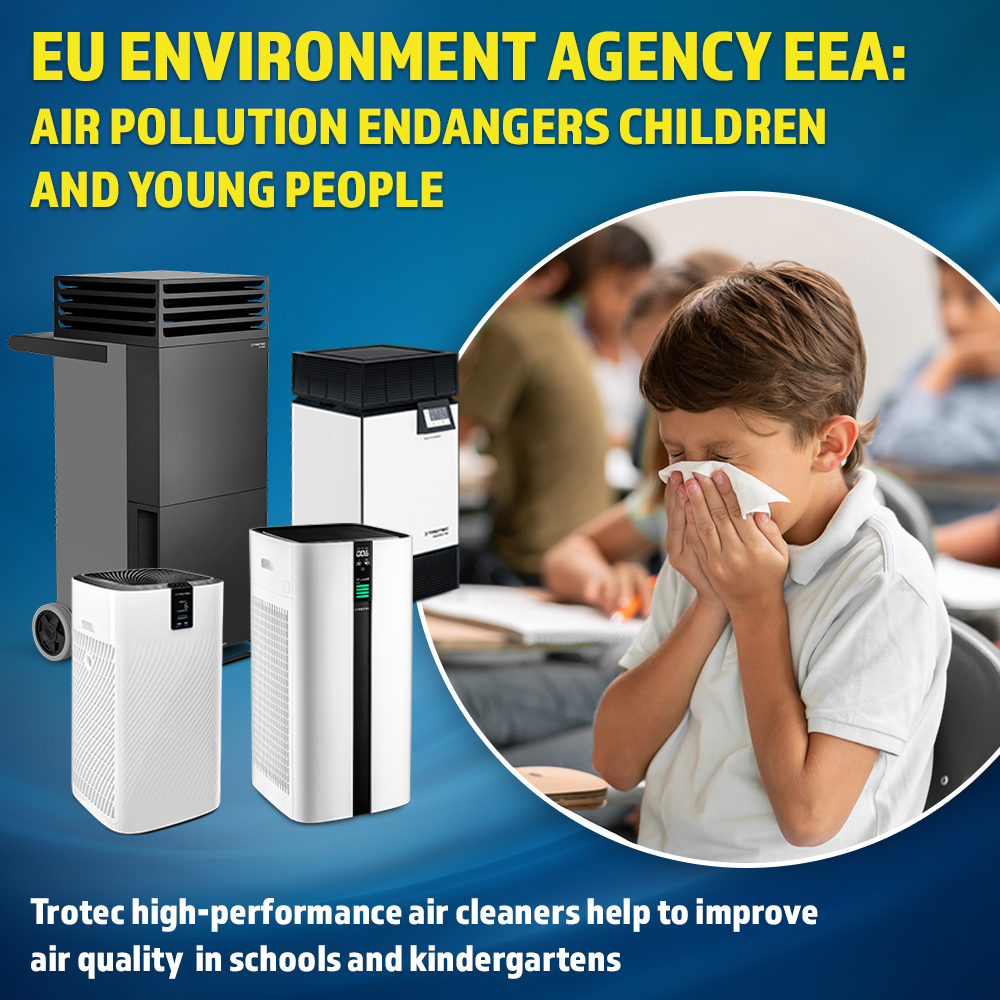 According to a recent report by the European Environment Agency (EEA), the continuing high levels of air pollution in large parts of Europe put children and young people in particular at risk. The Environment Agency’s experts estimate that over 1,200 adolescent deaths in Europe each year are due to the effects of air pollution. In addition, fine dust increases the risk of chronic respiratory diseases or dangerous asthma attacks for children and adolescents later in life.
According to a recent report by the European Environment Agency (EEA), the continuing high levels of air pollution in large parts of Europe put children and young people in particular at risk. The Environment Agency’s experts estimate that over 1,200 adolescent deaths in Europe each year are due to the effects of air pollution. In addition, fine dust increases the risk of chronic respiratory diseases or dangerous asthma attacks for children and adolescents later in life.
Jürgen Resch, Federal Executive Director of Deutsche Umwelthilfe (DUH) comments on the report as follows: “1,200 premature deaths of children and young people each year are due to poor air quality in Europe, and every single case is one too many! In addition, air pollution increases the risk of numerous chronic diseases and impaired lung function that affect children throughout their lives. Premature births, low birth weight or chronic diseases such as asthma and COPD are just some of the health consequences of excessive exposure to fine dust, ozone and the diesel exhaust toxin nitrogen dioxide. If we don’t finally take the WHO recommendations and thus the right to Clean Air seriously, we will steal the young generation’s healthy future.”
In their report on air pollution in Europe, the experts from EEA call for more measures to protect children’s health. For example, the establishment of clean air zones around schools and kindergartens, and the improvement of indoor air quality through air quality improvement measures.
In this article you will learn how clean air areas with pollutant-free air can be implemented in schools, day-care centres and care facilities using Trotec air purification technology.
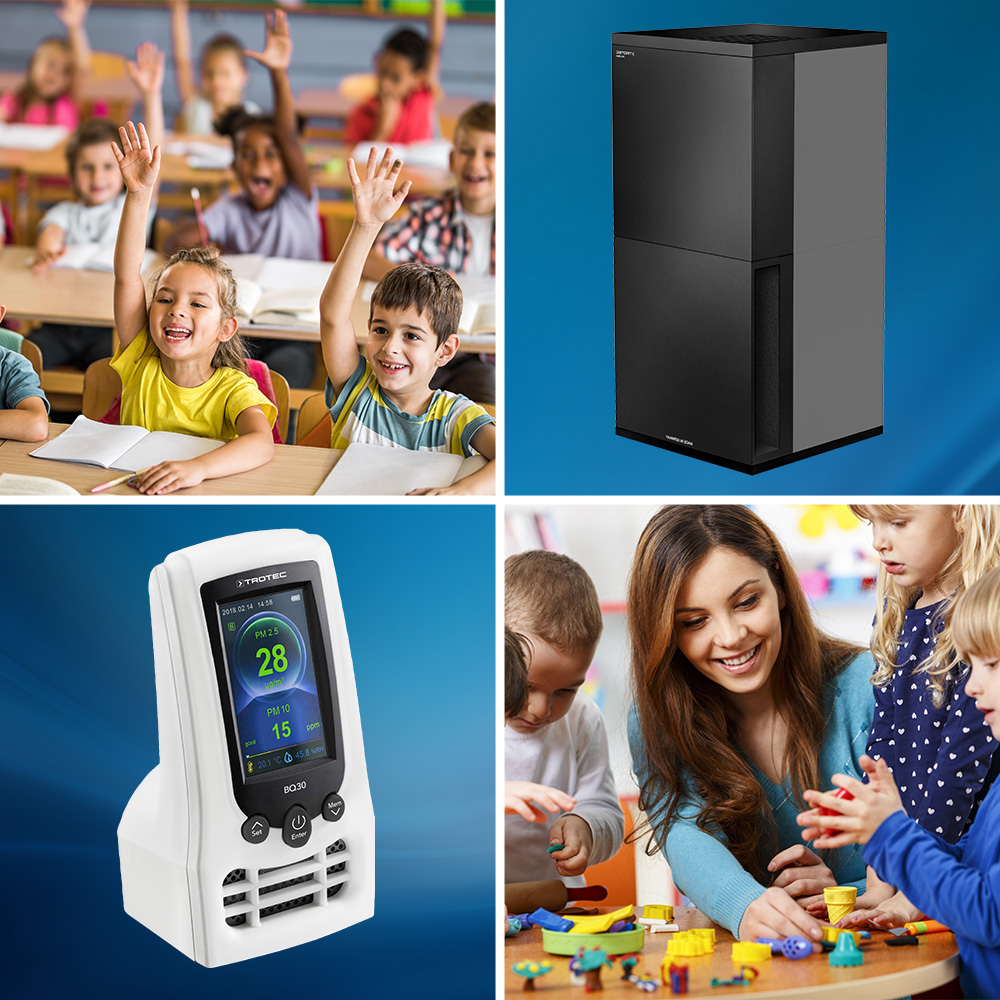
Why are children particularly vulnerable to air pollution?
Various factors make children and young people particularly vulnerable to air pollution. Children have a higher breathing rate than adults and take in more air per kilogram of body weight with their breathing. Due to their smaller body size, they also breathe the air closer to the ground, where pollutants such as fine dust particles concentrate and disperse. According to the EAA, along with industry and traffic, heating is the main cause of air pollution in Europe.
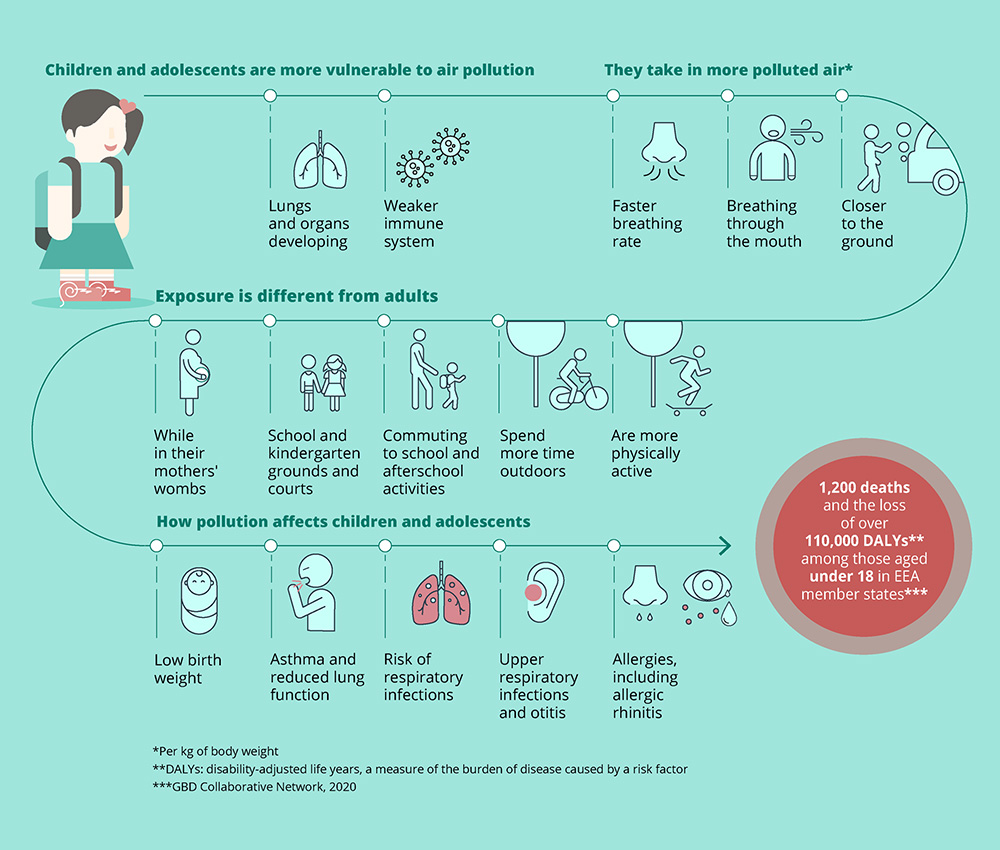
EAA recommendation: Make use of opportunities to improve air quality in schools and kindergartens
Children can do little to protect themselves from breathing in pollutants. They also have no way of influencing air quality, warns the EAA in its briefing on air pollution and children’s health. This is why cities and municipalities, as well as politicians, are called upon to improve air quality in the vicinity of schools, kindergartens and childcare facilities through appropriate measures until overall air pollution is reduced to a safe level.
Establishment of clean air zones around schools and kindergartens
The EAA recommends that the establishment of “clean air zones” can reduce the concentration of pollutants in the vicinity of schools and childcare facilities. Sensible measures would be, for example, traffic restrictions or driving bans at the start and end of the school day. When choosing locations for new schools and day-care centres, care should be taken to ensure that they are built as far away from road traffic as possible in order to reduce traffic-related pollution outside the buildings.
Improvement of indoor air quality in schools and day-care centres
In addition to looking at the air quality around schools and kindergartens, the experts from the Environment Agency also recommend monitoring indoor air quality and improving it through appropriate measures: “Children spend many hours indoors in schools and kindergartens, so measures to reduce air pollution in these spaces are crucial to reduce their overall exposure.”
Keeping track of the air we breathe: air quality monitoring
With the practical BQ30 air quality monitor, schools and kindergartens can reliably keep an eye on indoor air quality. The BQ30 measures both the CO2 concentration in the room air and displays the measured value clearly on the LCD display. In addition, the practical measuring device measures the amount of fine dust particles in the room air and makes dangerously high concentrations immediately visible. To this end, the measuring device uses laser technology to easily detect the smallest air pollutants of the sizes PM2.5 and PM10 in micrograms per cubic metre.
The BQ30’s large colour LCD displays real-time data:
- CO2 content in the room air
- Particle mass concentration in the air
- Air temperature
- Relative humidity
In order to protect children and young people from indoor pollutants, it is also important to avoid unfiltered ventilation indoors when there are high levels of pollutants outside schools, according to the EAA’s expert paper. An improvement in air quality could be achieved, for example, through more green spaces and vegetation around schools and kindergartens. Where this is not possible, the use of mobile air purifiers can help to quickly and reliably eliminate harmful pollutants in the indoor air.
Achieve clean air and low fine dust levels indoors: AirgoClean® air purification
Those that want to ensure permanent protection against harmful fine dust particles and chemicals as well as flu, rhinovirus, respiratory syncytial virus (RSV), and coronaviruses in the air will find AirgoClean® air purifiers from Trotec to be the ideal solution. A positive side effect: Less ventilation is required thanks to technical air purification, which pays off especially with regard to the current high energy prices. The rooms do not cool down, the heat remains in the room.
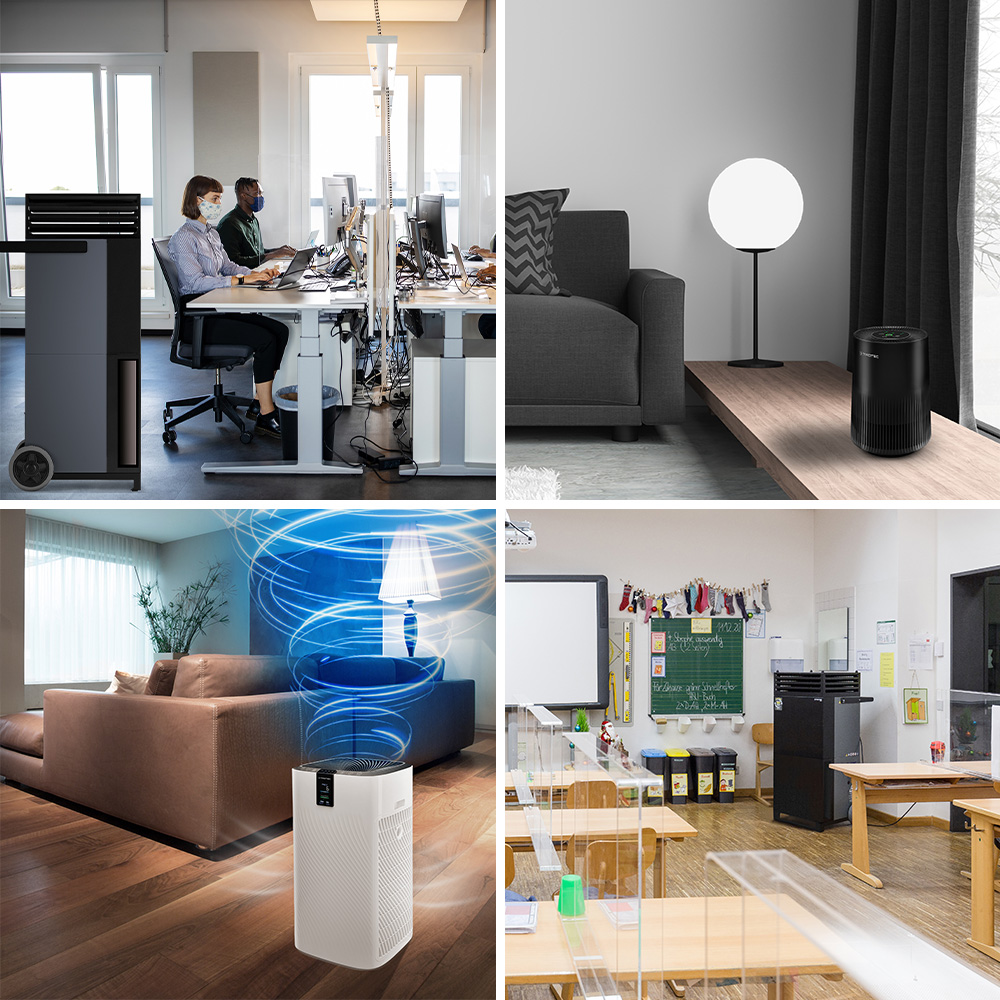
HEPA filter technology removes fine dust from the air
Equipped with highly efficient HEPA filters, the mobile AirgoClean® series air purifiers remove more than 99% of all suspended particles from the room air and promote healthier respiration in children and young people. Fine dust particles are filtered out of the room air just as reliably as disease-causing viruses, bacteria, pollen and allergens.
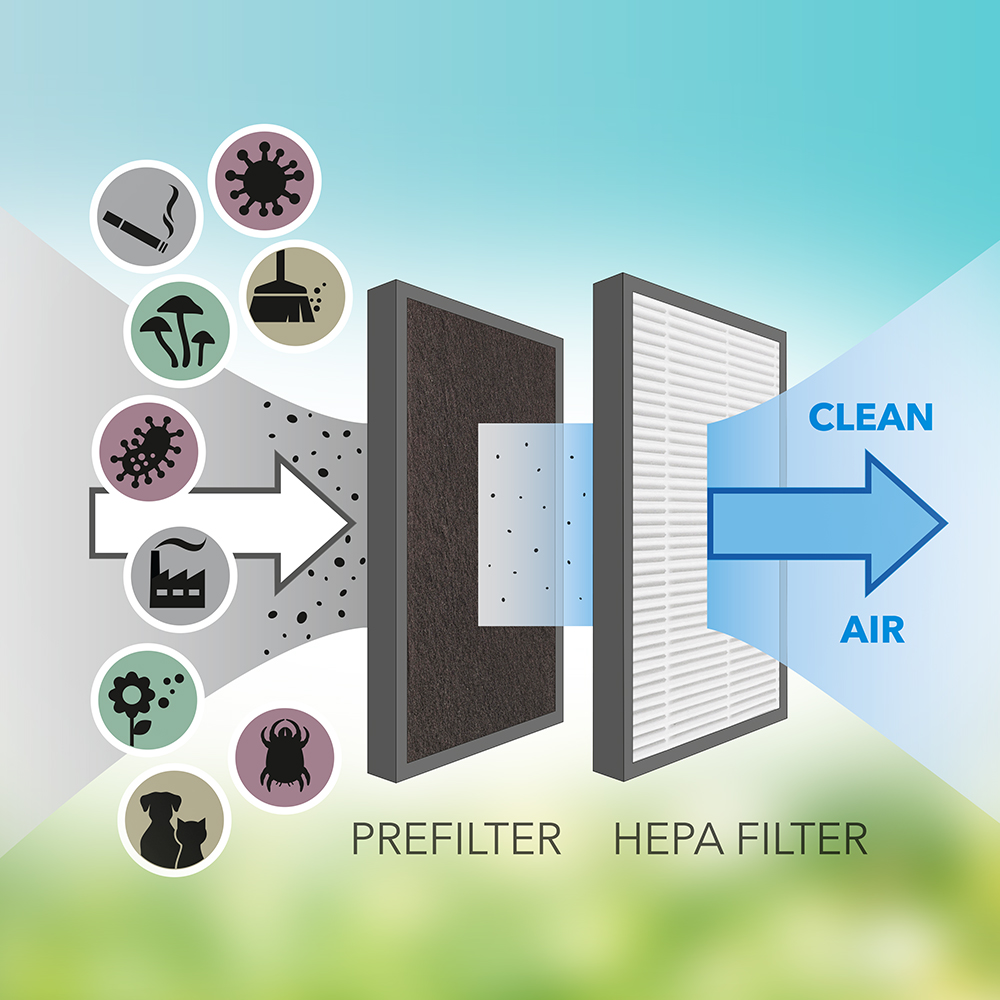
One particularly practical feature: AirgoClean® air purifiers with integrated air quality display make the otherwise invisible air quality visible. In addition to the numerical display of the PM 2.5 value (number of fine dust particles < 2.5 µm), a visual display with coloured LED lights indicates the degree of purity of the ambient air.
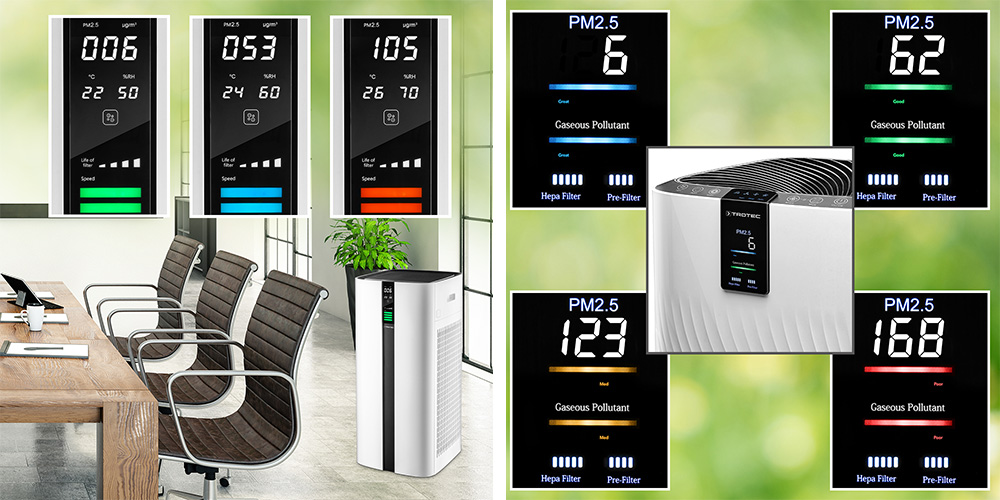
Maximum protection from fine dust hazards in schools and day-care centres: TAC high performance air purifiers
Five models in two device variants – each with proven filter effectiveness for protection against fine-dust particles and airborne pathogens make the TAC series a flexible and scalable air purification solution for workspaces in industrial environments.
- Extremely robust construction for professional use
- High flexibility of use due to mobility; simply set up where a high level of protection against airborne risk is required
- Air volume up to 2,100 m³
- H14 high-performance HEPA filter according to EN 1822
- Constant air volume flow, even with increasing filter contamination
- Fully automatic operation through flexible programming
- Sensor-controlled filter change indicator (pre-filter and main filter) for longer filter service life
- Low noise level
- Made in Germany

